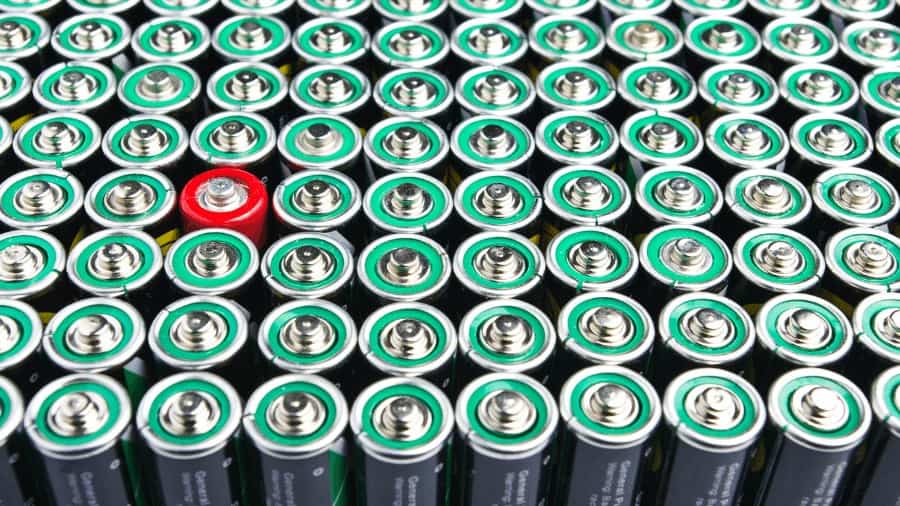Which Trail Camera Has The Best Battery Life?
Cameras have come a long way over the past few years. From smartphones to home surveillance systems to trail cameras; cameras help people capture the world one picture or video at a time. The battery life is a major factor to consider before purchasing one. So which trail camera has the best battery life?
The trail camera with the overall best battery life is the Browning Darkops extreme trail camera. It is well-optimized and can last for up to 7 months with good batteries.
Perhaps one of the most common questions asked by trail camera enthusiasts is: “What is the life expectancy of a trail camera battery?” This is important because it determines how many videos or pictures to expect when next you check your camera. In the rest of this article, we will provide you with useful information about this topic; let’s begin!
The trail camera with the best battery life
The Browning Darkops extreme trail camera
This camera comes with a 16MP sensor and takes 1080HD resolution videos which can be 5 seconds to 2 minutes in length. This trail camera is well optimized allowing it to last up to 7 months with good batteries. The battery meter can support the use of both alkaline and lithium batteries. It also has a feature called ‘Smart it video’ which allows videos to be recorded while the animal is still moving in front of the camera.
It is equipped with an invisible infrared LED that allows you to capture wildlife to up to 80 feet. It has a compact case which protects the trail camera from harsh weather. It is also waterproof preventing them from getting damaged even in heavy rainfall.
The Browning Darkops extreme trail camera might be a bit expensive, small but it is still one of the best and powerful cameras out there with the longest battery life.
Check out the Browning Darkops extreme trail camera on Amazon
Best budget option with battery life
Victure trail game camera
The Victure trail game camera records videos with a full high-definition resolution of 1080p which can take 15 frames per second. It is also equipped with a sensor of 14MP allowing it to take clear videos and images.
The camera uses AA batteries which can last up to 6 months depending on the traffic on animals which is quite impressive for the budget camera. Additionally, an external D.C supplier can also be connected to it giving it unlimited power supply.
The Victure trail game camera also has a trigger speed of 0.5secs taking 3 continuous shots making it almost impossible for it to miss wildlife passing through the area quickly. It is also equipped with 26 infrared low glow LEDs and a quality motion sensor making it capable of taking good black and white nighttime videos and pictures. The low glow reduces the possibility of startling wildlife within its range. It also features a 120-degree range making it easier to capture images of wildlife at a wide-angle.
It comes with a very friendly 2.4 inches LCD screen to view and change the settings of the videos and images you want. This camera is one of the best choices for an affordable entry-level trail camera with impressive battery life.
Check out the Victure trail game camera on Amazon
How long do trail camera batteries last?
This is a very important question as it determines how many videos and pictures to expect when you check your camera. It’s a terrible thing if your trail camera doesn’t stay active for more than 2 months as you might not find any useful footage or pictures in its memory storage. However, there is no hard and fast rule on how long trail batteries last.
There are a number of factors such as the battery, the camera itself, the modes and settings, and even the weather. Some batteries then to depreciate and drain quickly during the cold weather. Additionally, when your trail camera is on video mode, it tends to prolong the active use of the camera, thereby draining the batteries faster.
Trail camera batteries should be able to handle about 30,000 pictures before they are completely drained. There are a lot of factors that affect the battery life of a trail camera such as the type of battery, the ratio of day to night photos, the camera stings like detection delay, and even the ambient temperature or weather. It is a well-known fact that alkaline batteries tend to get drained more during cold weather.
Types of Batteries
Generally, there are 3 basic types of battery you can use for your trail camera namely; Alkaline, lithium, and Nickel hydride metal rechargeable battery.
Nickel hydride metal rechargeable batteries
Nickel hydride metal rechargeable batteries have one of the best battery life almost at par with the lithium battery. The battery’s performance decreases remarkedly in cold weather/low temperatures than any other type. With Nickel hydride metal rechargeable batteries or Lithium, you are certain that it can last for up to 6 months when they are fully charged.
Check out Nickel hydride metal rechargeable batteries on Amazon
Alkaline batteries
Alkaline batteries are the cheapest and the most available of the other types. They lose a lot of charge with time and have a low capacity compared to the other two types. They also have the highest internal resistance, which means the life span of the battery will continue to decrease as the internal resistance continue to build up.
The internal resistance is created from a type of dead material produced from the reaction between zinc and manganese dioxide which is located within the battery. The battery does not work well in weathers that are either hot or cold. As the battery gets drained the delayed detection gets higher and the video is during the nights starts to get worse. Alkaline batteries can last for up to 2 or 3 months depending on whether video or picture mode is activated.
Check out Alkaline batteries on Amazon
Lithium polymer batteries
A lithium polymer battery is the best alternative to a Nickel hydride metal rechargeable battery. Internal resistance within the lithium battery doesn’t have much effect on the life span compared to the alkaline battery due to the improved electrolyte constituents. The battery also does well in cold weather in temperature as low as – 40 degrees. They can last for up to 6 months while retaining most of their charge when not in use.
Check out lithium polymer batteries on Amazon
You should also check the compatibility of your camera with the battery you want to use. Some trail camera doesn’t work well with Nickel hydride metal rechargeable battery. Using an incompatible battery with your trail camera can reduce its performance, making it drain fast.
The ratio of day and night photos
Night photos are not taken exactly like day photos. Some trail cameras use a low glow infrared LED or a no glow infrared LED which emits infrared light in other to take pictures and videos in the night. This technology requires extra energy which can also reduce battery life.
Cellular
Of all the types of trail cameras out there, cellular trail cameras take more energy. This is because the cellular trail cameras download and upload a large amount of data. When the network reception is poor, it will continue to search for a signal. To understand how fast they drain batteries, study how fast your phone battery drains in flight mode compared to if they aren’t in flight mode. If you wish to have this type of camera, it is advisable to invest in an add-on battery to boost the life of your battery.
Other trail camera settings
Asides from the type of battery which have a large significance on how long the battery will last, you will also need to check the settings of the camera. The settings on the camera affect the performance of the battery. If you increase some settings on the camera, you are also increasing the rate at which the camera is consuming energy thereby decreasing the time the battery will last. Some settings that can drastically affect the battery’s life are detection delay, modes, multi-shot, and resolution settings. Let’s quickly check them out.
- Detection delay
Detection delay settings control the time it takes before the camera will wait before it takes the next picture. It means the longer the delay, the fewer pictures will be taken on an interval, and the shorter the delay, the more pictures. If you delay to a high value, you will definitely increase the time your battery will last but if you decrease the value of the delay will reduce the battery life of your battery thus increasing the rate at which you change your batteries. Try the best detection delay that best fits you as well as optimize the battery.
- Multi-shot
This setting allows the camera to take a lot of pictures when it is triggered. It is also called burst shot, burst mode, continuous shooting mode, or continuous high-speed mode. This mode allows you to choose the best image at out all the images. It also allows you to arrange all the pictures in a sequence to analyze the transitions carefully. By reducing the number of shots taken, you will reduce the amount of energy drained from the battery. You can also deactivate this feature if your camera still takes a lot of energy even after reducing the number of pictures it should take in multi-shot mode.
- Modes
This is probably one of the most important that considerably decreases the battery’s life of the trail camera. There are different modes you can use like photo only, video only, video plus photo mode, time-lapse. It is quite obvious that any mode that includes videos will drain the battery faster. Time-lapse mode is another mode that consumes a lot of power. Try to deactivate video or time-lapse mode if you don’t need it for your observation to boost the time your battery will last. Your battery can last for up to a year without changing if it is on the only picture mode.
- Resolution
This refers to the number of pixels that is a digital image. The higher the resolution, the higher the pixels allowing you to see more details in the picture. The lower the resolution, the lower the pixels thereby reducing the details in the picture. It means if you change the settings to a higher resolution the camera will need more interpolation leading to more energy to be consumed from the battery. Interpolation is basically the duplication of existing pixels. Choose a moderate resolution that will benefit you more in the long run.
Add-on power sources
Additional power from other sources will considerably increase the time it will take before it gets completely drained. All the add-on are additional expenses but you can get them if you feel you would need them to make the best of your tail camera. The two most power add on power sources are battery boxes and solar power sources.
- Battery boxes
They are either 12V or 6V batteries that provide extra power to the trail camera. They are somewhat the ultimate solution to any battery issue you are facing. The batteries can last for months before they will need to be recharged. They are usually weatherproof and can work in extreme temperature. You are sure that any camera connected to this monster will last for a really long time.
- Solar panel
Solar panels will provide your trail camera unlimited energy as long as the panels are receiving uninterrupted direct sunlight. This additional power source is a cost-effective alternative to the battery boxes. They are not effective when they are under cloudy and rainy weather and they are useless at the night. It is important to place the solar panel in a place that will receive a lot of sunlight compared to other areas.
What are the best batteries for trail cameras?
Best overall – Energizer recharge power plus
They can retain their charge for up to 12 months if you are planning to keep them in storage for a long time. These batteries can be reused more times compared to lithium batteries. However, their performance is not the best especially during extreme heat conditions with a temperature close to or higher than 90 degrees. Additionally, these batteries cannot be used in all trail cameras, so check the manufacturer’s guide to confirm before you instead it into the camera.
Check out the Energizer recharge power plus on Amazon
Best budget – Energizer Ultimate Lithium
They are one of the best batteries you can get in the market for your trail camera at a reasonable price. They can retain their charge well even in low or high temperatures when compared to either alkaline or rechargeable batteries. Thus, if you plan on keeping them for a while before using them, you don’t need to worry too much about their discharge rate because they discharge very slowly when compared to the rechargeable batteries.
They can be stored for up to 20 years. Energizer Ultimate Lithium batteries were well enough to prevent acid leakage thereby protecting your camera and its component from corrosion. The batteries also have a larger capacity than the cheap alkaline battery which will allow your trail camera to last for more than 2 months nonstop.
Check out the Energizer Ultimate Lithium on Amazon
Are cheap batteries worth it?
When choosing a trail camera, the overall dependability and battery life are perhaps the most important factors to consider. Rather than making a fuss over the specifications and megapixels of the camera, knowing how long the camera will last and how many photos and videos you can expect from your trail camera on a single set of batteries is very imperative.
The fact is that your cheap alkaline AA batteries for your trail camera might work fine during the summer, but would certainly not work as efficiently during the cold weather. Cold weather drains batteries quickly, making your trail camera inefficient. In this regard, it might be best to up your battery game a bit. If you want to make the best of your trail camera especially during cold weathers, then cheap batteries wouldn’t cut it.
Alkaline batteries are the most common type of batteries used in trail cameras. These batteries are quite cheap and easy to get but their capacity is quite low. The standard output of an alkaline battery is 1.5v. They also have about 1000ma discharge capacity which is decent but not good enough to power the trail camera effectively for a long period. Alkaline batteries also have release acids when the energy within hem have been exhausted which can damage the components within your trail camera
At the end of the day, it all depends on what you want. Cheap batteries might be useful if you want to take pictures of wildlife or humans for a week or two but in the long run, they can cause more harm than good. So, it is advisable to get any of the ones on our list so ensure that you achieve your aim of investing in a trail camera.







